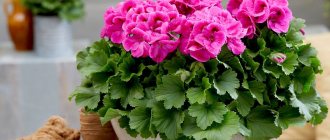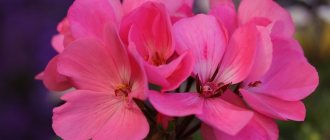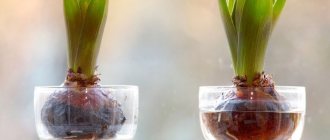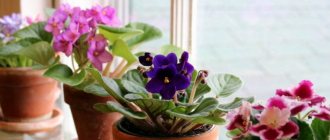Smell is not the most important characteristic of indoor plants. The latter are chosen, first of all, for the attractiveness of leaves, shoots and flowering, for endurance and unpretentiousness, checking whether they are suitable for the conditions in our home. And the fact that many indoor plants can surprise with a pleasant - or not so pleasant - aroma is often forgotten. Subtle, refined, or, conversely, heavy and overwhelming, and sometimes very unpleasant, the aroma of plants can radically change the atmosphere in our home. And the best of the best natural flavors that can fill our homes with sweet clouds deserve special attention and proper selection. After all, they affect our well-being, mood, and even performance.
Common oleander (Nerium oleander). © floradania
Peppermint
This is an easy-to-care bush with an inspiring summer scent.
It is easy to grow at home by planting seeds in the ground or rooting a fresh sprig. Mint loves good lighting, so it should be placed on a windowsill on the sunny side. In order for mint to grow faster, watering should be moderate - only after the soil has dried. Dried leaves of the plant can be used to make sachets, refreshing additions to tea, and also used to prepare cold drinks. Mint can be crushed, placed in a saucer and placed on the edge of the bath during water procedures: hot steam will enhance the aroma, turning ordinary bathing into aromatherapy.
Sarcococcus low
Sarcococcus low has a pleasant strong aroma, which it will exude from January to March. The white or pinkish bell-shaped flowers of this plant do not exceed 1 cm in length. After flowering, strong glossy black berries are formed on the sarcococcus.
The flower does not require care and can grow even in a polluted and smoky atmosphere. Loves moist, well-drained soil, but at the same time is drought tolerant. Feels great in the shade and has excellent immunity to diseases and pests.
In winter, the plant should be kept in a cool room with high humidity.
Jasmine Sambac
An evergreen indoor vine with an abundance of small snow-white flowers with a wonderful aroma. With proper care it looks noble and elegant. Jasmine Sambac is one of the most unpretentious species that can withstand warm indoor wintering.
Flowers appear from March to October, their smell is spicy, sweet, and may seem heavy - it’s not for nothing that jasmine is called the king of scents.
Perfume compositions for perfumes and cosmetics are created based on the plant. The flowers can be added to tea leaves as a natural flavoring.
Laurel
A beautiful slow-growing shrub that, with proper care, will become a small tree. Its leaves have a piquant herbal aroma that is familiar to everyone.
The plant loves the sunny side and good watering. Once a month the leaves need a shower, after which they exude the most delicate aroma of laurel.
To use fragrant bay when cooking, cut off old shoots with leaves at the root and dry.
Hoya fleshy
A climbing ampelous vine, intended for vertical interior decoration, is distinguished by elegant, white and pink star-shaped flowers, collected in umbrella-shaped inflorescences. They have a strong spicy aroma, similar to the smell of liqueur.
If you place a profusely blooming hoya in a small room, the pronounced aroma can cause slight dizziness, so we recommend placing the plant in spacious rooms.
Hoya needs plenty of watering, but does not like dampness. Tolerates sunlight calmly.
Eucharis
This is an elegant flower that is called the sweet and aggressive queen. It has the aroma of a unique bouquet of tropical flowers. Sweet, aromatic odors can interfere in the evening and at night, when the release of aromatic substances from eucharis begins especially strongly.
The plant blocks any odors; it is better to keep it in the kitchen or other rooms, but not in the bedroom. The incense of the flower helps in creating a festive atmosphere, increasing activity and is well suited for communication, get-togethers, and parties.
Indoor rose
A rose bush in a pot looks elegant and charming, having a beneficial effect on a person not only with its appearance, but also with the aroma of the flowers. And although roses are less common at home than in open ground, they are becoming increasingly popular thanks to the wide selection of varieties.
Those who grow roses at home note that they smell more fragrant indoors than outdoors.
It is believed that the delicate scent of roses reduces irritability and helps normalize metabolism. Dry air and an abundance of direct sunlight are contraindicated for the plant.
A pleasant aroma is not always just a bonus
The scent of houseplants is often considered an additional “optional”, perceived more as a prize or a nice addition, rather than as an important characteristic that should be considered when purchasing. Meanwhile, the fragrant nature of flowers and inflorescences, and sometimes leaves of plants, must be taken into account.
Fragrances affect our well-being, emotional state and even health in different ways, and this effect is not limited to “pleasantness”. The perception of odors is purely individual and requires careful selection. In this regard, it is better to treat aromatic indoor crops as when choosing perfume products or choosing oils in aromatherapy. The smell of a particular plant should not only be pleasant to you, but really like it, have a positive effect on your psycho-emotional background and not lead to sleep disturbances.
When choosing fragrant plants, you should also take into account how the smell will manifest itself in individual rooms and closed spaces, whether it will be appropriate in specific rooms and corners of the house, and whether its intensity will become a source of unpleasant emotions and poor health. After all, fragrant indoor plants, even if we are talking about the most exquisite variations, can influence us not only positively.
Selecting plants according to the intensity of the smell in accordance with the purpose of the room is the most important, but not so simple task:
- In the bedroom, only the most delicate, refined, delicate and delicate aromas do not cause anxiety and sleep problems. Plants whose odor intensity increases at night would not be appropriate here.
- Sweet, fruity, cheerful aromas of citrus fruits and other intensely fragrant plants nearby will be appropriate both in a children's and playroom during the day, and in a study or craft corner.
- All aromas that are associated with confectionery, reminiscent of extracts and spices, will be appropriate in the kitchen. As do plants, the smell of which helps purify the air and eliminates unpleasant odors.
- Heavy, thick, rich, hauntingly cloying and intense aromas of “night” plants can only be used in those rooms that you only pass by, where you do not rest or work in the evening. Such plants, even in a corridor or hall, can cause a lot of trouble; most often they will have to be taken away from bedrooms and living rooms at night. But at the same time, if you like their scent, it will be more than appropriate in the bathroom or hallway. And both in the morning and during the day, it will become an additional activating factor in any room, help you forget about drowsiness, put you in a working mood and awaken creative energy just like a cup of invigorating coffee.
- All aromatic plants are conventionally divided into sedative and tonic. The smell of the former calms, relieves fatigue, slows down the pulse, allows you to relax and forget about tension. The latter act on the contrary - they increase heart rate, mental activity, excite the central nervous system, increase endurance and performance. Moreover, tonic aromas are found much more often than soothing aromas. If the first (sedative) are appropriate even in places where you relax and sleep, then the second (tonic) can become a source of great trouble in the bedroom and living room in the evenings. But you shouldn’t overdo it with either one. Check how the plant affects you and consider the nature of its effects when placing it in your home.
Strong-smelling plants are always appropriate for special occasions. A small fragrant bush of a profusely flowering plant, placed on the table as a living bouquet, can transform a festive feast or create a special solemn, romantic atmosphere no worse than the best cut arrangements.
But in any circumstance and with any plant, testing for individual response is still key. The correct selection of plants according to your tastes should be supplemented by checking the smell to ensure its acceptability for all family members. After all, even if the smell is not too pleasant for one person, it is not worth starting a plant with intense aroma.
It is best (and easiest) to check the aroma and its tolerance in those plants that are purchased in bloom. But this option is not always possible. If you can’t make sure that you like the smell of flowers at the time of purchase, before you decide to have a houseplant with a strong smell, be sure to take a closer look at it. Smell the flowers of friends, visit a greenhouse, botanical garden or flower exhibition, walk through flower shops. Before you bring such a plant into your home, you should make sure that its smell will be pleasant to you. It is advisable to carry out this assessment before all other plant purchasing criteria are assessed.
Roses in the interior
Lavender
A purple herbaceous plant with a soothing aroma. Often used as an ingredient in various skin care products and sachets, lavender can also be added to tea and some salads.
Helps with insomnia, repels insect pests. Suitable for those who do not like strong scents.
Lavender looks best in a ceramic pot. Requires moderate watering and a drainage layer.
Mixing the scents of indoor crops
Despite the fact that all fragrant indoor plants have their own, distinct individuality, they do not at all require the choice of only one crop. If you are a fan of fragrant plants and value scents as much as the beauty of flowers or leaves, then you can safely create your own collection. True, in the process of selecting fragrant indoor stars, you need to take a completely different approach than when composing conventional compositions.
Treat fragrant plants as part of one big bouquet, arrange scents in such a way that together they create a harmonious, unique atmosphere in the house. Consider the tonic or, conversely, calming effect of the aroma, its intensity and the time when the aroma is revealed to the greatest extent.
Do not mix plants with different scents with each other; arrange them throughout the house so that in every corner you are surrounded by the aroma that suits you best.
Araucaria
An elegant coniferous tree with bright green needles that can be grown in an apartment. Its natural forest smell saturates the air with phytoncides, filters and moisturizes it, which helps improve the microclimate in the house. In December, the plant can be decorated instead of a Christmas tree - its aroma will give you a New Year's mood.
Rarely grows above 2 meters. Needs coolness - the most comfortable temperature in summer is 20 degrees, and in winter about 10.
The delicate scent of the listed plants is a worthy alternative to air fresheners and interior perfumes. Make sure that the concentration of essential oils contained in them does not cause headaches - for this, air circulation must be constant.
Azalea
Recent Entries
Chainsaw or electric saw - what to choose for the garden? 4 mistakes when growing tomatoes in pots that almost all housewives make Secrets of growing seedlings from the Japanese, who are very sensitive to the soil
A plant with large flowers and a pleasant smell. Azalea oil is used in perfumery, folk medicine, and soap making.
Perfectly cleans the air in the house from unpleasant odors. The aroma of the flower can cleanse the atmosphere of your home from negative energies and thoughts.











